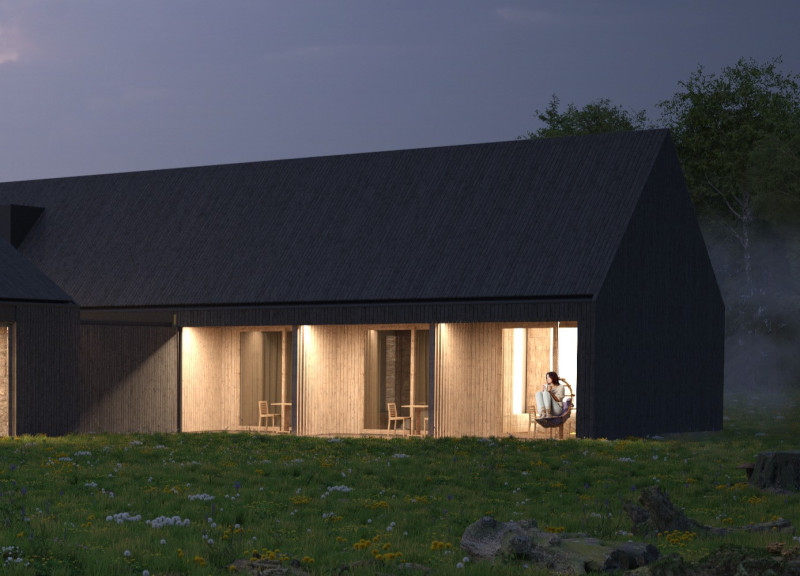5 key facts about this project
The design represents a commitment to eco-friendly practices and contemporary aesthetics, serving a dual purpose of preserving the past while accommodating modern needs. The architectural layout clearly delineates public and private zones, effectively optimizing social interaction in communal areas while providing privacy and comfort in private quarters. This strategic division allows for the usability of space tailored to different activities, ranging from workshops to intimate guest accommodations, promoting a versatile function that is highly relevant in today's society.
One of the crucial aspects of this project is its unique design approach, specifically in the use of materials. The incorporation of channelled timber, utilizing the shou sugi ban technique, not only enhances the visual appeal of the building but also ensures durability and resistance to weather conditions. Alongside timber, aluminum is thoughtfully employed, especially in structural components, offering a lightweight yet sturdy alternative that embodies modern engineering principles. Glass features prominently in the design, with large windows utilizing Low-E technology to maximize natural light and foster a connection between the interior and the surrounding landscape. This choice aids in creating an inviting atmosphere within the guest house, drawing visitors closer to nature while maintaining energy efficiency.
The integration of insulation materials such as EPS and mineral wool reflects a comprehensive approach to environmental sustainability, ensuring thermal performance that reduces the overall energy needs of the building. Furthermore, the foundation and structural components made of concrete contribute to the building’s longevity, underscoring an architectural focus on durability and engineering excellence.
Also noteworthy is the building's relationship with its site. It is carefully positioned to enhance its interaction with the landscape, ensuring minimal visual disruption and promoting the natural beauty of the rural setting. This dedication to site integration is not merely an aesthetic concern but a fundamental aspect of the architectural philosophy underpinning the project. A landscape that encourages outdoor activities and social interaction extends the functionality of the guest house beyond its walls, promoting a communal experience that is essential to its intended use.
The Teamakers Guest House stands as a testament to innovative architectural approaches focused on both heritage and contemporary living. By blending modern design principles with a respect for historical context and environmental concerns, it offers a compelling vision for future architectural endeavors. Those interested in exploring further details about the architectural plans, sections, and overall architectural ideas are encouraged to delve deeper into the project presentation. Doing so will illuminate the myriad of design considerations and thoughtful decisions that shape this significant contribution to the field of architecture.


























